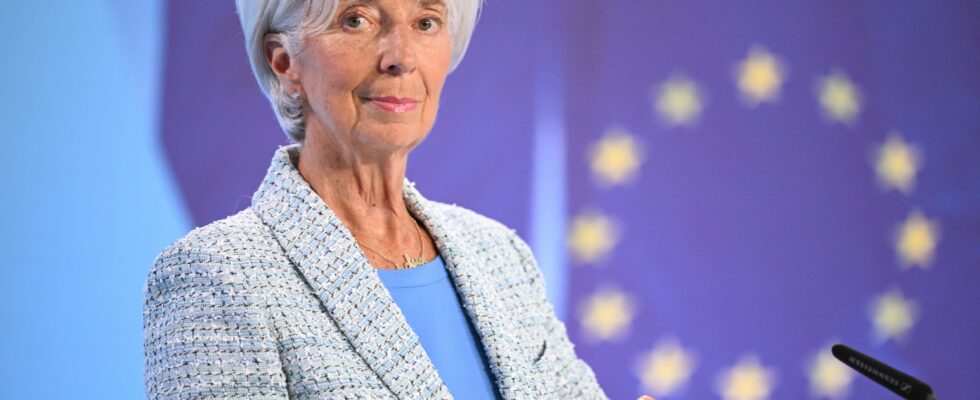After an unprecedented phase of monetary tightening, the European Central Bank (ECB) began, this Thursday, June 6, to lower its key rates, offering a slight breath of fresh air to ease tensions on real estate credit and business loans.
Serving as a reference, the rate on deposits of 4%, its highest reached last September, was reduced to 3.75%, according to a press release from the institution. The notable decline in inflation in the euro zone since the peak reached in the fall of 2022, posting 2.6% in May, ended up convincing the ECB Governing Council to ease monetary restraint from June, at the end of an unprecedented rate increase cycle launched in July 2022, then nine months of pause at record levels.
However, the ECB still sees inflation “remaining above the target” of 2% “for a large part of next year”. The cause is internal price pressures which remain strong, especially in services, due to high wage growth. The institute has therefore revised its inflation forecasts upwards compared to that of March, seeing the aggregate on average at 2.5% in 2024 and 2.2% in 2025, finally 1.9% in 2026. Regarding the evolution of prices excluding energy and food products, the average increase will be 2.8% in 2024, 2.2% in 2025 and 2.0% in 2026.
A boost for real estate
The ECB’s last rate cut dates back almost five years, in September 2019. The question is whether the timid movement made on Thursday will create a psychological shock precursor to a resumption of activity, all without seeing the inflation starts to rise again. The most visible impact should concern the real estate market, where borrowers, especially those with variable rates, have been squeezed by the sudden rise in rates. This caused a collapse in the volume of new loans to households seeking to purchase housing, without having a significant effect on housing prices.
Prospects for lower rates can therefore “alleviate the slump in the real estate market, the recovery of which can support growth somewhat,” notes Eric Dor, director of economic studies at the IESEG School of Management.
The past rise in rates, however, had little effect on the volume of new consumer loans, and households will once again loosen their purses based primarily on “purchasing power, i.e. the ability of wages to catch up past inflation, rather than interest rates,” adds Eric Dor.
As for bank loans to businesses, at their lowest during the phase of monetary tightening, the rebound should mainly come from better economic prospects and competitiveness, which has deteriorated in the euro zone due to high energy prices. For credit rates to fall sharply for the benefit of households and businesses, the ECB would need to “make it clear that it is committing to a series of successive rate cuts”, concludes Eric Dor. However, in an economic context still full of uncertainties, the ECB gave no indication on Thursday on the continuation of the new cycle of rate cuts, continuing to affirm that this will depend on the economic data available meeting after meeting.
